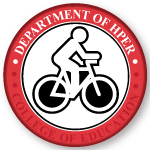Author ORCID Identifier
Document Type
Article
Publication Date
3-13-2020
Publication Title
Journal of Applied Physiology
Volume
128
Issue
3
First Page
565
Last Page
575
Abstract
Peripheral artery disease (PAD) is an atherosclerotic disease that is associated with poor vascular function, walking impairment, and reduced quality of life. Land-based exercise therapy (LBET) is frequently recommended to improve walking and reduce symptoms. Recently, evidence has suggested that heated-water exercise therapy (HWET) is an effective intervention for PAD. However, the efficacy of LBET versus HWET in PAD patients had not been elucidated. Therefore, we sought to compare effects of LBET with HWET on cardiovascular function, exercise tolerance, physical function, and body composition in PAD patients. PAD patients (n = 53) were recruited and randomly assigned to a LBET group (n = 25) or HWET group (n = 28). The LBET group performed treadmill walking, whereas the HWET group performed walking in heated water for 12 wk. Leg (legPWV) and brachial-to-ankle arterial stiffness (baPWV), blood pressure (BP), ankle-brachial index (ABI), 6-min walking distance (6MWD), claudication onset time (COT), physical function, and body composition were assessed before and after 12 wk. There were significant group-by-time interactions (P < 0.05) for legPWV, BP, 6MWD, COT, body composition, and resting metabolic rate (RMR). Both groups significantly reduced (P < 0.05) legPWV, BP, and body fat percentage, and HWET measures were significantly lower than LBET measures. Both groups significantly increased 6MWD, COT, and RMR, and HWET group measures were significantly greater than LBET measures. A time effect was noted for baPWV reduction in both groups (P < 0.05). These results suggest that both LBET and HWET improve cardiovascular function, exercise tolerance, and body composition, and HWET showed considerably greater improvements compared with LBET in patients with PAD.
Recommended Citation
Effects of heated water-based versus land-based exercise training on vascular function in individuals with peripheral artery disease Song-Young Park, Alexei Wong, Won-Mok Son, and Elizabeth J. Pekas Journal of Applied Physiology 2020 128:3, 565-575


Comments
This is the accepted manuscript of an article published in the Journal of Applied Physiology on March 13, 2020 and can be accessed at https://doi.org/10.1152/japplphysiol.00744.2019